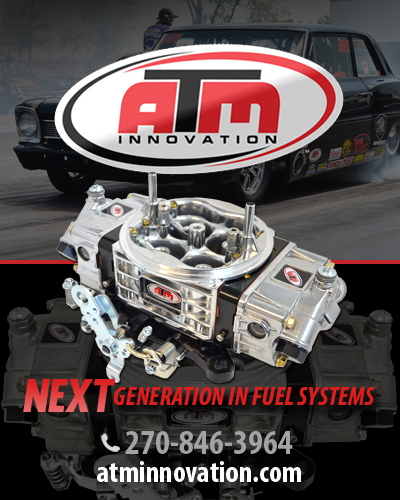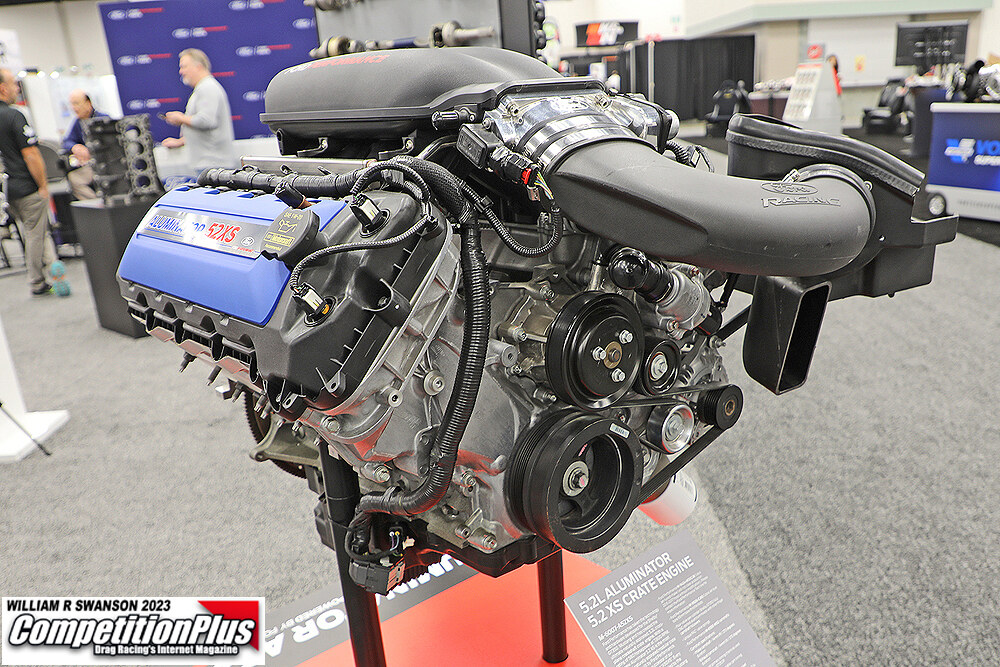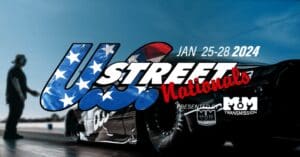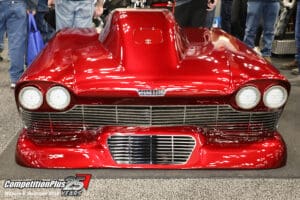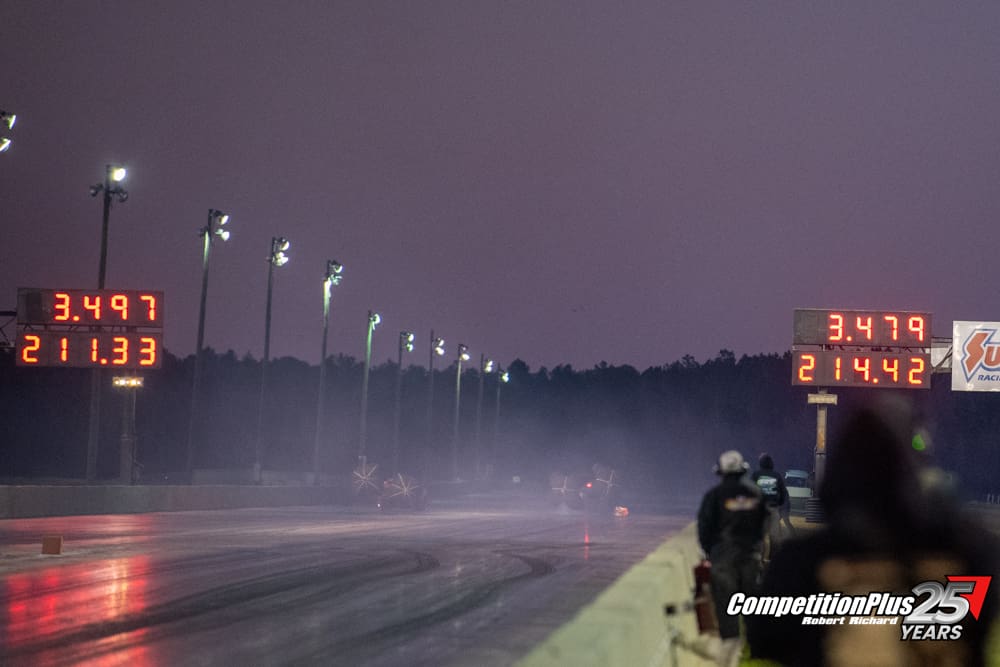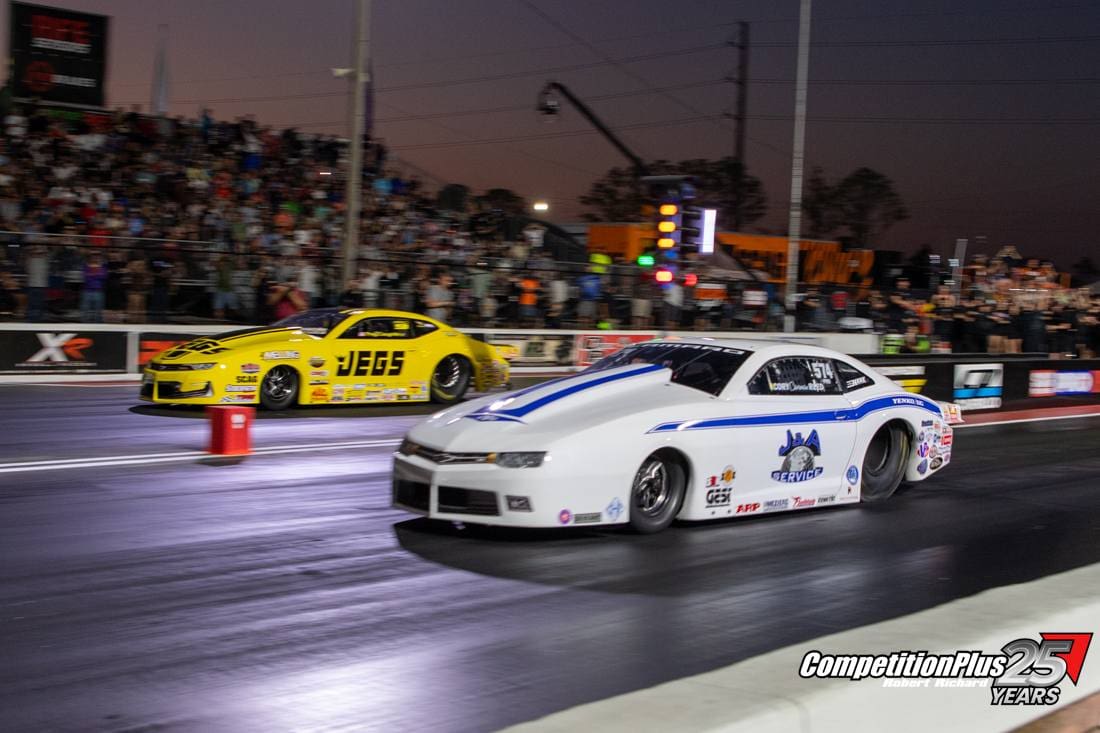
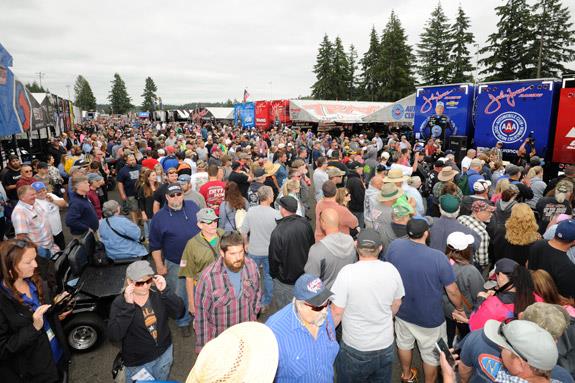 Jason Fiorito will have paid more than half a million dollars, shrugged off insults and doubts, and slogged through a bog of government-red-tape requirements before he even can begin physically building his vision for Pacific Raceways, near Seattle, in early 2017.
Jason Fiorito will have paid more than half a million dollars, shrugged off insults and doubts, and slogged through a bog of government-red-tape requirements before he even can begin physically building his vision for Pacific Raceways, near Seattle, in early 2017.
But he has turned the corner for shaping the multipurpose facility that recently hosted the Protect The Harvest NHRA Northwest Nationals into innovative tech center that revolves primarily around the dragstrip and road course but includes the karting and motocross venues.
While racetrack General Manager John Ramsey worked overtime this month to coordinate a tribute to the late NHRA chief starter Mark Lyle and assist the NHRA in visiting for its annual Western Swing stop on the Mello Yello Drag Racing Series tour, Fiorito was laboring over a project overview. And while the Funny Car class was writing national record after national record on the track during the event, Fiorito was writing mandatory documents to ensure Northwest racing fans will continue to enjoy seeing the same kinds of thrills.
Last November. King County passed legislation that allows for the excavation of 1 million yards of gravel for sale and authorizes the construction of 400,000 square feet of commercial space.
“That money I can turn around and put right back into the facility,” Fiorito said.
That sounds so simple. However, for Fiorito, the process has been anything but simple. And he said he recognizes why fans and media have lobbed criticism his way, for he, too, feels the frustration as he has tried to move forward.
Washington classified Pacific Raceways and this latest Fiorito initiative a “Project of Statewide Significance” two years ago. Gov. Jay Inslee and the Governor’s Office of Regulatory Innovation and Assistance have shown strong support. And, Fiorito said, the state agencies have expressed frustration with the protracted county process, as well. But, he said, “Gov. Jay Inslee’s office is actively participating in helping us move this permit process forward. He’s sticking his neck out for an industry in the state right now.” He said Inslee’s predecessor, Christine Gregoire, helped brief Inslee, lobbying for Pacific Raceways for “quietly supporting an industry in our state.”
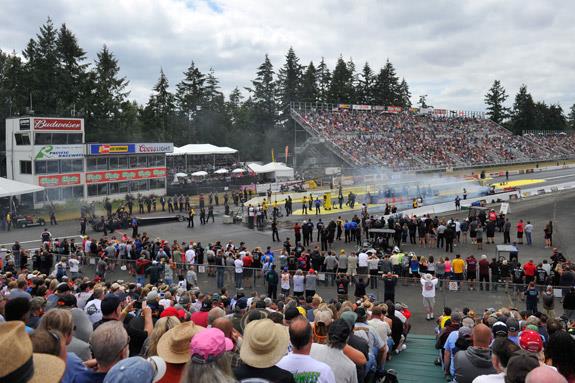 A revolving door of politicians never helps a long-term project, and Fiorito said he knows “that’s the nature of the beast when dealing with the elected-official arena: every once in a while you have to go back in and start in from Square One.” With Inslee up for re-election in November, Fiorito said, “We believe this project is going to be as important to Jay’s successor as it is to him. Whether we have him as governor moving forward, I think anybody sitting in his seat sees the regional benefit of a sustainable motorsports facility.”
A revolving door of politicians never helps a long-term project, and Fiorito said he knows “that’s the nature of the beast when dealing with the elected-official arena: every once in a while you have to go back in and start in from Square One.” With Inslee up for re-election in November, Fiorito said, “We believe this project is going to be as important to Jay’s successor as it is to him. Whether we have him as governor moving forward, I think anybody sitting in his seat sees the regional benefit of a sustainable motorsports facility.”
He estimated the ProtectTheHarvest Nationals made a $15 million regional impact.
“An NHRA national event – conservatively, with no multipliers – is responsible for $15 million of regional economic impact,” Fiorito said. “This would be the impact of one of the smaller events. Although our market is one of the larger markets in which NHRA national events occur, we are one of the smaller national events. There are events, like Las Vegas, that have a significantly larger impact. Because the facility was in disrepair for so long, and because we’ve struggled with the entitlement procedure to bring it back, we are, admittedly, one of the smaller events on the NHRA circuit. We strive to become one of the larger events, and then we’ll boast closer to a $25 million impact.”
Fiorito shouldered the burden of public criticism.
“I’ll be the first to admit it’s the facility that’s holding the event back in its current size. We’ve just struggled with running profitably because of our struggles with county. The truth of the matter is even if we have the money to improve at certain places, the county hasn’t let us,” he said. “And it has been more frustrating than you can imagine, knowing that this event could eclipse probably 50 or 60 percent of the national events’ numbers. But we’ve been unable to – through lack of county vision – to realize the improvements of the facility that will help that process along.”
The happy news, he said, is “I think we’re getting there.”
“Candidly, the only reason I think we’re limited to 50,000 square feet of reserved space right now [for his proposed buildings] is that people have been waiting for this so long and hearing about it for so long that I have very little credibility that it’s actually going to happen,” Fiorito said.
“I believe once dirt starts moving and buildings start going up that there’s going to be a heck of a lot more than 50,000 square feet reserved. But I understand. I’ve been singing this tune for over a decade now,” he said. “We believe we’ve got it set up well enough that it’s actually going to happen. I’m putting my money where my mouth is. I’m spending a pretty fair amount of money with consultants every month right now, getting all this coordinated. From my perspective it’s 100 percent go. The process will probably cost me upwards of half a million by the time it’s done. But I can understand form an outsider’s perspective, ‘Yeah-yeah-yeah, we’ve heard this before.’
“I have to put myself in your shoes. And I know why things have been slow. And I know why things haven’t happened as quickly as I anticipated they were going to happen 15 years ago. But unless you’re in my shoes, you don’t see why everything goes as inefficiently as it does. You don’t see me being as frustrated as my customers have been. But trust me, I’ve been equally or more frustrated with the process, and I’ve got more of my own skin in the game than most people understand,” Fiorito said. “So I just have to have thick skin and keep moving forward the best I can.”
To understand Fiorito’s plight, consider that the legislation calls for the appointment of a special project manager. The King County Council wanted a “facilitator of efficiency” to oversee the permits. How’s that for government gobbledygook? The bright part of it is that it will ensure a relatively speedy process from here on out. In Fiorito’s words, “If left to their own devices, we’d be talking years before I had the ability to start erecting any of those structures. So it looks like the county council forced some speed into the process through the legislation. I was unable to start the clock before the special project manager was officially under the county’s control.
“I made my first $20,000 deposit into the account that funds the special project manager’s activities. So I’m spending money with consultants. I’m spending money with the special project manager. I’m racking up a bill with the country right now. And hopefully that’ll all culminate in a building permit in early 2017,” he said.
“Our ability to acquire any kind of a development permit in the last 10 years has been frustrating, at best. The King County Council put in charge an oversight position and the county procurement office, in classic government fashion, took seven months to appoint this person. Now we have him and the stage is set for our application. We will be applying for all of our development rights [this] week. We believe the legislation calls for a six-month window between application and actual building permits. So we expect a construction beginning in the first quarter of 2017,” Fiorito said.
Future Pacific Raceways tenants have reserved more than 50,000 square feet so far. That means nearly half of the Phase I space is reserved.
“We have a little bit of manufacturing and fabrication and a lot of storing personal race cars, and we have some retail,” Fiorito said.
“Race car manufacturers and quite a few private race-car owners want to keep their cars at the track, [for] both the road course and the dragstrip,” he said. “The advantage for our weekly drag-racing guys is they can keep and work on their cars right there at the track. They can even pit out of their building. So the towing vehicles in and out of the facility for guys who predominantly race at the track is alleviated. They don’t have to set up and tear down their pits. They can build a little hospitality area right inside their space. They can have a little kitchenette and entertain. We have probably close to 30,000 square feet of space those guys have signed up for.
“We have a couple of innovation companies associated with the Pacific Innovation Center. One is a battery company that is working on accelerating battery technology. A lot of the EV [electric vehicle] production is limited by battery technology – we can make a car go only so far and so fast on a charge. So we have a battery company that’s interested in setting up shop,” Fiorito said.
Reminiscent of a racetrack in California is the vision he has for his family-owned, fir-tree-surrounded facility southeast of Seattle.
“We have a couple of guys who build, maintain, and service race cars for the road course. They would be setting up a business that would provide fabrication and maintenance and trackside service on cars that road race. And we have a couple of retail shops that sell safety equipment and support gear for both drag and road racing,” he said.
“When I was down at Thunder Hill over the years, there was a guy who had a rear-wheel dyno and a fabrication shop set up at Thunder Hill Raceway in Willows, Calif. That guy couldn’t open his doors quickly enough in the morning and couldn’t keep ’em open long enough into the night. He had a line of customers out his door all weekend long with everything from cars that had crashed and needed major repair down to carburetor tuning and fuel-injection tuning on the dyno. These guys that set up shop at the track can’t staff themselves enough to take care of the demand during a race weekend. It blows your mind how much help most of need once we unload our cars and try to get through a weekend,” Fiorito said. “The Pacific Northwest is a racer’s market. And the only reason people aren’t storing their stuff at the track and buying stuff at the track is that right now there’s not the ability to do it.”
He said he believes he will have many interested companies and individuals, once the buildings start popping up.
“My Phase I is only 105,000 square feet. I think there is going to be a lot of folks who wish they were on that reservation list come early 2017, when they ask me for space and I say, ‘I’m sorry, but you’re going to have to wait until Phase II. It’s going to be 2018 or 2019 before I’m going to have space available,’ ” he said.
“I’ve got to get the site graded before I can erect the buildings, and that is limited by the amount of gravel that is being moved off the property. For me it’s a good problem. But there are going to be some people frustrated – but I’ve given them plenty of notice. We have told them: Reserve your space now, or there’s a chance you’re going to have to wait for a few years.”
He said, “My square footage is going to just about double if I get one-tenth of what I’m working on right now.
“I can’t talk about it specifically because I don’t have it signed up right now, but it is a tenant who would have a museum-type environment that my customers would love. They would quadruple their customers because during weekly events or a national event, if you want other activities or want to get out of the sun and spend an hour looking at vintage equipment that has been restored to the nines, it would be wonderful to have a museum-type atmosphere that would have all the restoration facilities right there on site,” Fiorito said. “These people are spread across four or five different locations. They’re doing engines in one location, chassis and bodies in another location, displaying the final product in a third location, and storing stuff in a fourth location. I said, ‘Why don’t you set up shop here at the track? Your foot traffic for your museum would quadruple. You could have all the restoration facilities on site, next to all the people who have the ability to help you.’ They said, ‘Wow, Jason, this is starting to really make sense.’ So we’re talking to people who have synergies with what they’re doing off-site right now and our customer base we already have.”
One of his inspiration on the consumer side of his vision is Idaho’s Spring Mountain Motor Resort & Country Club, a place that isn’t really on the national radar but is unique and beautiful.
“Nobody outside the club members even know the place exists,” Fiorito said. “They’ve got garages underneath, condos above, a beautiful road course and retail shops. The members go in, they stay right at the facility, their cars are parked beneath them, they leave their cars there year-’round, they’re serviced by the businesses that take care of all those condos and cars, and they can go and shop. It’s a one-stop resort around the racetrack. It’s beautiful. It makes plenty of money to keep itself operating. It’s a great model. Of course, they have sun 12 months out of the year down there.”
At least at Pacific Raceways, he said, “There’s got to be a restaurant. And we’re talking about building a clubhouse even, allocating some of the dragstrip and road course time to a private club. Say we had a nice restaurant that’s open to the public, but a lot of these tracks build their business model exclusively around a private club. There’s nothing to stop us from building a semi-private, semi-public clubhouse with a restaurant and access to the racing facility exclusively to certain days of the month, the ability to keep your car there, convention space, meetings rooms. Wouldn’t it be great to have a business meeting and then have lunch then go race go-karts? I’d have every meeting I ever had at that place.”
But he knows it’s a first-things-first proposition. His main focus is the tech innovation portion.
“The motorsports industry can dovetail with the renewable energy-driven vehicle industry to accelerate technology,” Fiorito said. “We could be at the forefront of greening up the auto industry, and that’s what really got [Inslee] and the state Department of Commerce interested, the Pacific Innovation Center idea. They can use that as a magnet to attract innovation companies to the area by saying, ‘Hey, come visit our innovation center, at a testing facility where you can prototype, manufacture, and test right on site.
“Part of what we plan is to have an incubator program where we have some prototype manufacturing and some laboratory space,” he said. “For example, for a year we want companies to come and collaborate on biofuel technology or hydrogen fuel cells. Then people can come in on a temporary basis that is supported by the whole, essentially, and tackle very specific problems the industry sees needs some attention.”
Right now, Fiorito finally is getting the attention he had hoped for all along.













